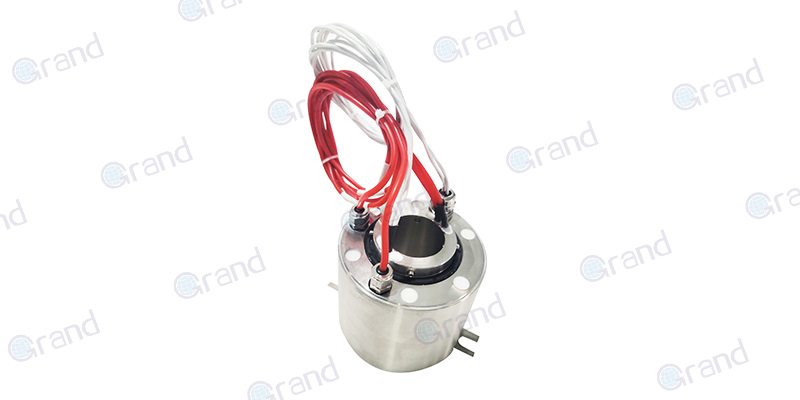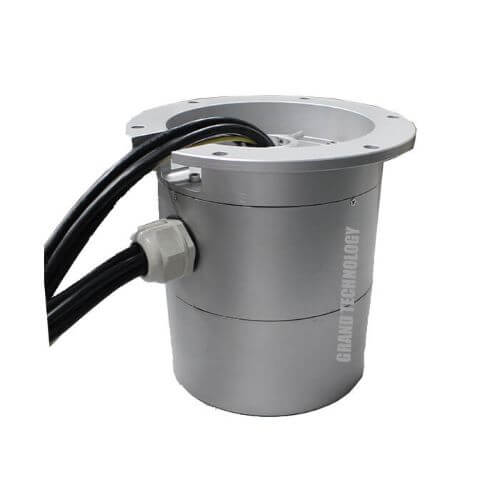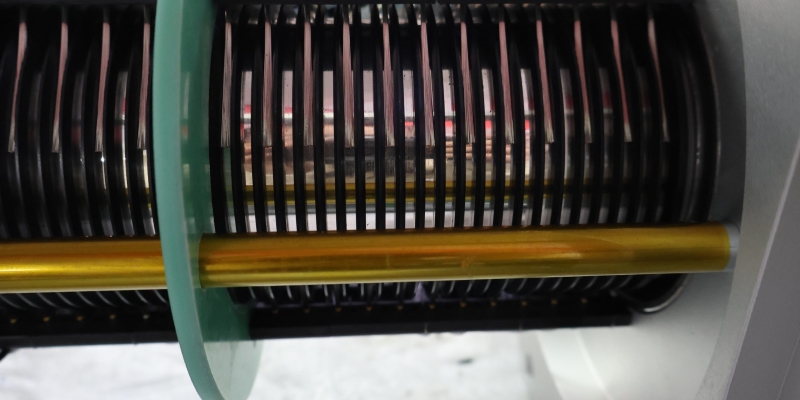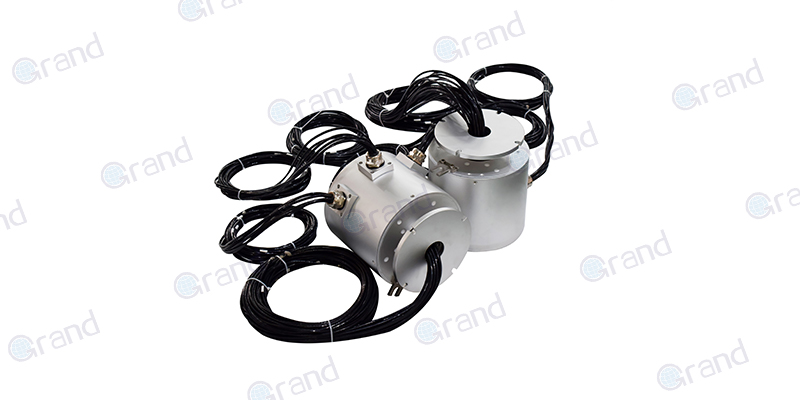Slip rings are a ubiquitous component in countless machines and systems, transmitting power or signals from a stationary structure to a rotating one. Sealed slip rings, specifically, provide numerous advantages for operating in harsh conditions. This article aims to shine a light on these crucial devices, guiding users in selecting the most suitable product for their application.
Introduction Sealed Slip Rings
Slip rings are a crucial piece of technology used widely across various sectors. They play an indispensable role in electrical systems where they allow the transmission of power and electrical signals from a stationary source to a rotating component. By keeping electrical connections continuous even during rotation, they help effectively manage complex rotational systems. This has given them diverse uses in an array of equipment, ranging from wind turbines and generators to CT machines and cable reels.
However, standard slip rings face challenges when subjected to certain environmental conditions such as dust, humidity, or temperature extremes. This is where sealed slip rings step into the picture. Sealed slip rings rise to these challenges, offering the benefits of a typical slip ring but with an added level of protection.
The primary purpose of sealed slip rings is to protect the electromechanical connections from adverse environmental influences, thus ensuring undisrupted functionality. They are designed to withstand challenging conditions, including exposure to dust, moisture, and corrosive substances, all the while ensuring steady electrical transmission. This makes sealed slip rings particularly useful in industries like maritime, mining, and heavy-duty equipment manufacturing—sectors where equipment is often exposed to harsh or unpredictable environments.
The importance of sealed slip rings cannot be overstated. They enhance the longevity and reliability of the equipment they are incorporated into. By providing a robust solution for power and signal transmission even under less-than-ideal conditions, they safeguard the operational efficiency of many applications that we rely on in our daily lives. This aspect is the driving force behind their emerging prominence, highlighting why an understanding of these vital components is more relevant and valuable than ever.

Basics of Sealed Slip Rings
Like their conventional peers, sealed slip rings rely on a fundamental working principle. The rotating part of the slip ring, referred to as the rotor, is in continuous contact with a stationary component, known as the stator or brush. This contact enables the transfer of electrical signals or power across the interface, regardless of the rotor’s movement.
Sealed slip rings, however, take this concept a step further. They incorporate seals into the design to provide additional protection to the interfacing surfaces from external environmental contamination. This seal makes sure that the electrical contacts remain safe from dust, moisture, or other corrosive substances, thereby ensuring an undisturbed transmission process despite harsh environments. Simultaneously, it prevents internal lubricants from leaking out, further extending the life cycle of the slip ring.

When drawing a comparison to conventional slip rings, the biggest difference lies with the presence of the seal. While both types serve similar basic functions—transferring power or signals between stationary and rotating parts—sealed slip rings are specially designed for improved durability and reliability in challenging workplace conditions. Unsealed, standard slip rings may succumb to performance issues when exposed to environmental contaminants, which is not a concern for well-sealed slip rings.
Further down the rabbit hole of sealed slip rings, different types of seals come into focus. There are numerous sealing options available, each serving a particular industry or application requirement.
- Hermetic seals, for example, offer the highest level of protection. They are typically used where complete protection against gases and liquids is a must, such as in underwater devices or very dusty environments. This kind of seal ensures a completely leak-free condition, keeping the internal and external environments completely segregated.
- On the other hand, shaft seals are commonly utilized for applications where relatively less protection might suffice. They prevent contaminants from entering along the shaft entry, which may be sufficient for slightly less demanding environments.
The type of seal chosen for a particular slip ring model heavily depends upon the accepted level of operational risk and the specific demands of the application. Therefore, understanding the different types of seals becomes a prerequisite to selecting the most suitable sealed slip ring.
The Function of Sealed Slip Rings
Sealed slip rings are specialized electrical components designed to enable the transmission of power, signals, or data between a stationary part and a rotating structure, all while being protected from environmental factors. Their primary function is to maintain a continuous electrical connection, even when the components they connect are in constant rotational motion relative to each other.
Key Functions and Features:
Electrical Transmission: Sealed slip rings facilitate the transfer of electrical current, whether for power or data signals, from a stationary source to a rotating part. This is crucial in many applications where components must rotate continuously without interrupting the electrical connection.

Environmental Protection: The “sealed” aspect refers to the protective casing that shields the internal components of the slip ring from environmental factors like dust, moisture, chemicals, and other contaminants. This sealing ensures that the slip ring operates reliably in harsh or demanding environments.
Rotational Flexibility: These slip rings are designed to handle continuous rotation. They enable a rotating part, such as a machine arm, wind turbine, or radar system, to move freely while maintaining an uninterrupted electrical connection.
Durability and Longevity: Due to the sealed design, these slip rings are typically more durable and have a longer operational life compared to non-sealed versions. The protection from external contaminants reduces wear and tear on the internal components, leading to lower maintenance requirements and extended service life.
Versatile Applications: Sealed slip rings are used in a wide range of industries and applications, including robotics, medical equipment, wind turbines, packaging machinery, and defense systems. In these contexts, the ability to transmit power and signals reliably in rotating systems is critical.
In summary, sealed slip rings are crucial components in any system requiring reliable transmission of electricity or signals between stationary and rotating parts, particularly in environments where protection from contaminants is essential.
Sealed Slip Rings Technologies
Sealed slip rings incorporate several advanced technologies to enhance their performance, durability, and adaptability in various applications. Here’s a detailed overview of the key technologies involved in sealed slip rings:
1. Sealing Technology
- IP (Ingress Protection) Ratings: Sealed slip rings are often designed with high IP ratings (e.g., IP65, IP67), indicating their resistance to dust and water ingress. This sealing technology ensures that the internal components are protected from environmental factors, extending the slip ring’s operational life.
- O-Rings and Gaskets: High-quality O-rings and gaskets are used to create airtight and watertight seals around the slip ring housing. These materials are chosen for their resilience against temperature extremes, chemicals, and mechanical stress.
2. Contact Technology
- Gold-to-Gold Contact: Many sealed slip rings use gold-to-gold contacts, which provide excellent electrical conductivity and reduce contact resistance. This technology minimizes electrical noise and enhances signal integrity, making it ideal for sensitive data transmission.
- Fiber Brush Contact: Advanced fiber brush technology involves multiple fine wires (brushes) making contact with the rotating ring. This reduces friction, wear, and electrical noise, resulting in longer life and more reliable performance.
3. Advanced Materials
- Corrosion-Resistant Materials: The housing and internal components of sealed slip rings are often made from corrosion-resistant materials like stainless steel, aluminum alloys, or specialized plastics. These materials are selected based on the environmental conditions the slip ring will encounter, such as exposure to saltwater, chemicals, or extreme temperatures.
- High-Temperature Resistant Insulation: The insulating materials used within the slip ring are designed to withstand high temperatures without degrading. This ensures the slip ring can operate reliably in environments with significant thermal stress.
4. Modular Design
- Modularity: Some sealed slip rings are designed with a modular approach, allowing for the customization of the number of circuits, types of signals (power, data, etc.), and sealing options. This modularity enables manufacturers to tailor slip rings to specific application requirements.
- Hybrid Configurations: Sealed slip rings can combine different types of transmission (e.g., electrical, optical, fluid) within a single unit. This hybrid technology allows for the simultaneous transmission of power, signals, and even fluids (like coolant or air) through one compact device.
5. Wireless and Fiber Optic Technologies
- Wireless Transmission: Some advanced sealed slip rings incorporate wireless transmission technologies to eliminate physical contact altogether. This approach is especially useful in applications where minimizing wear and maximizing the lifespan is crucial.
- Fiber Optic Slip Rings: For high-speed data transmission, sealed slip rings may use fiber optic technology. Fiber optic slip rings allow for the transmission of large amounts of data at high speeds with minimal signal loss and are immune to electromagnetic interference.
6. Integrated Condition Monitoring
- Sensors and Diagnostics: Modern sealed slip rings may include built-in sensors and diagnostic systems to monitor their operational status. These sensors can detect wear, temperature changes, and other factors that could indicate potential failure, allowing for predictive maintenance and reducing unexpected downtime.
- Remote Monitoring: In some cases, these monitoring systems can be connected to remote diagnostic tools, enabling operators to track the condition of slip rings in real-time from a distance, which is particularly useful in inaccessible or hazardous locations.
7. Low-Friction Designs
- Lubrication-Free Options: Some sealed slip rings are designed to operate without the need for lubrication, reducing maintenance requirements and preventing contamination of the slip ring’s interior. These designs often employ advanced materials and coatings to achieve low friction.
- Special Coatings: Low-friction coatings, such as Teflon or other advanced polymers, are applied to the contact surfaces to minimize wear and extend the life of the slip ring.
8. Compact and Lightweight Designs
- Miniaturization: Advances in manufacturing and materials technology have enabled the production of smaller, more compact sealed slip rings without sacrificing performance. This miniaturization is particularly important in aerospace, medical, and military applications where space and weight are critical considerations.
- Integrated Solutions: Sealed slip rings can be integrated into larger systems or components, reducing the need for additional assemblies and making them ideal for applications where space is limited.
9. EMI/RFI Shielding
- Electromagnetic Interference (EMI) and Radio-Frequency Interference (RFI) Shielding: To protect the transmission of sensitive data and signals, sealed slip rings often incorporate shielding to prevent EMI/RFI from affecting performance. This shielding is essential in environments with high electromagnetic activity, such as industrial machinery or military equipment.
In summary, sealed slip rings leverage a combination of advanced sealing, contact, material, and monitoring technologies to deliver reliable, durable, and high-performance solutions for transmitting power, signals, and data between stationary and rotating components in a wide range of demanding applications.
Benefits of Sealed Slip Rings
Sealed slip rings offer several key benefits that set them apart from their non-sealed counterparts, thereby making them an ideal choice for applications operating within harsh or demanding environments.
- Enhanced Durability: Sealed slip rings are designed to endure. With the inclusion of a seal, the essential components of the slip ring — the brushes and the ring surface — remain protected from environmental factors, thereby significantly reducing wear and tear. The sealing mechanism preserves the integrity of the brush-ring interface, prolonging the operational life of the device.

- Resistance to Harsh Conditions: A salient feature of sealed slip rings is their ability to resist challenging conditions. Whether exposed to high levels of dust, corrosive materials, or varying degrees of moisture, sealed slip rings continue to perform optimally. This is a necessity in industries such as maritime, cold-storage facilities, and wind energy.
- Longer Life Span: Another derivative benefit of the protective seal is the extended lifespan. By shielding the slip ring’s internal components from potential harm, sealed slip rings perform effectively for a more extended period, often outliving their conventional counterparts and decreasing the need for frequent replacements.
These benefits are primarily rooted in the protective capabilities of the seal mechanism. The seal acts as a physical barrier against environmental factors, such as dust, water, and corrosive substances. By doing so, it safeguards the internal electromechanical connection from damage or functional losses, maintaining the integrity of the electrical transmission, and thus ensuring productivity and lifespan.
In environments where dust particles are prevalent, the seal prevents these particles from interfering with the electrical contacts. In scenarios involving exposure to water or humidity, the seal stops water ingress which could otherwise cause short-circuiting or corrosion. Similarly, for apparatus operating within corrosive environments, the seal ensures that harmful substances do not come into contact with the sensitive electrical contacts.
In summary, the robust protection offered by sealed slip rings allows for reliable, long-term operation of devices even in the most demanding of environments, giving them a clear edge over their non-sealed counterparts.
Applications of Sealed Slip Rings
Sealed slip rings find applications in a wide variety of industries and devices, their usage dictated primarily by their ability to perform reliably even in challenging environments.
- Wind Energy Sector: In wind turbines, sealed slip rings play a critical role in transmitting power and data signals between the stationary assembly and the rotating turbine blades. Given the moist and windy environment typical of wind farms, the seal of these slip rings is essential to protect the electrical connection from exposure.
- Heavy Machinery: Sealed slip rings play an integral role in heavy-duty machinery such as excavators and dump trucks. Operating often in harsh, dusty conditions, the slip rings within these machines need to be durably sealed to sustain performance.
- Maritime Equipment: Underwater remotely operated vehicles (ROVs), sonar systems, and other maritime devices need to convey signals while being exposed continuously to corrosive seawater. This demanding task falls on the sturdy shoulders of hermetically sealed slip rings.
- Medical Imaging: Devices like CT scanners rely on slip rings to transfer data signals from the rotating gantry to stationary computers. Given the sterile, sensitive environments of medical facilities, sealed slip rings are employed to prevent contamination.

As such, it is evident that sealed slip rings play a pivotal role across various industry sectors. They are fundamental to the operation of countless machines and devices, often in settings where the cost of equipment failure could be astronomical and the maintenance opportunities limited.
For instance, in the renewable energy industry, wind turbines are increasingly installed in offshore locations, where maintenance efforts are cumbersome and downtime expensive. Here, the role of sealed slip rings in enabling continuous, reliable energy production cannot be overstated.
Similarly, in the maritime industry, where applications might be submerged under seawater, or the medical industry, where absolute sterility is required, conventional slip rings simply don’t cut it. Only sealed slip rings can offer the reliable, interference-free performance needed.
By ensuring that crucial power and signal transmissions remain operational despite the most challenging conditions, sealed slip rings have nestled themselves as an irreplaceable asset to many industries.
Sealed Slip Rings Working Environment
Sealed Slip Rings for Construction & Agriculture
Challenges and Considerations
While sealed slip rings provide numerous benefits, they are not without challenges. Understanding these challenges can help make more informed decisions about their use and maintenance.
- Mechanical Stiffness: One potential drawback is the added mechanical stiffness. The seals, although providing critical protective services, may increase the rotational torque needed.
- Seal Degradation: Over time, seals may degrade due to wear, pressure, or exposure to harsh chemicals. This can compromise the protective performance of the slip ring and necessitate regular inspection and occasional seal replacement.
- Increased Complexity: The inclusion of a seal often contributes to a more complex design. This might mean increased initial costs and more specialized personnel for maintenance.
When considering the selection of a sealed slip ring, several factors should be taken into consideration:
- Environment: First and foremost consideration is the environment in which the slip ring will be operated. If the operation involves exposure to water, corrosive substances, dust, or extreme temperatures, then a sealed slip ring might be the best fit.
- Load: The electrical and mechanical load that the slip ring would be subject to, also plays a role in selection. It’s advised to pick a slip ring with a capacity exceeding your estimation to ensure safe and sustainable operation.
- Durability: The seal’s durability should be evaluated based on the application’s requirements. For instance, applications involving constant exposure to harsh chemicals might require a hermetically sealed slip ring for optimal longevity.
- Maintenance: Finally, understanding the maintenance demands and the ability to meet them is crucial. As aforementioned, sealed slip rings might require more rigorous attention due to their increased complexity.
In conclusion, while sealed slip rings offer immense benefits, it’s crucial to be aware of their challenges and carefully consider the specific requirements of the application at hand while selecting a suitable model.
Fill out our inquiry form to get the best price on Sealed Slip Rings.
User Concerns about Sealed Slip Rings
Despite the many advantages they offer, users of sealed slip rings often encounter certain concerns. This section explores these concerns and provides guidance and solutions to alleviate them.
- Cost: Sealed slip rings are typically pricier than their standard counterparts due to their enhanced durability and improved design features. However, it is crucial to consider the potential cost savings from the reduced replacement frequency and increased operational longevity.
- Maintenance: The added complexity of sealed slip rings may require more specialized maintenance. However, regular maintenance can prevent costly failures and extend the slip ring’s lifespan. Also, many manufacturers offer comprehensive maintenance guides to assist users.
- Installation: The installation of sealed slip rings might seem challenging at first. However, proper planning and understanding of the installation manual can usually mitigate this concern. In more complex situations, a professional electrician can be employed to ensure correct installation.
- Finding Suitable Replacements: Locating a suitable replacement for a sealed slip ring can be a hassle, especially for older or more unique models. Manufacturers and suppliers can usually assist with identifying suitable replacements. It’s also a good practice to keep noted details about the model and specifications to simplify the process.
Addressing these concerns:
- While the cost concern is valid, it’s crucial to consider the overall return on investment. The increased upfront cost can pay off in terms of longevity, reliability, and reduced downtime.
- For maintenance, regular checks and routine servicing can prevent severe issues down the line. Also, consider seeking assistance from the manufacturer or a professional, particularly for more complex slip rings.
- Regarding installation, most manufacturers provide detailed instructions for installation and setup. However, in certain complex applications, seek professional help to reduce risks and ensure correct installation.
- While looking for suitable replacements, it is suggested to keep noted details about the model. Reach out to the manufacturer for assistance if required, providing them with the model and specification details to simplify the process.
While these concerns are certainly valid, informed decision-making, preventive maintenance, and proactive communication with manufacturers can mitigate most issues, allowing users to fully reap the benefits of sealed slip rings.
Market Overview and Future Trends
The market for sealed slip rings exhibits a vibrant and diverse landscape. With their suitability for use in demanding environments and their contribution to the longevity of devices, demand for these rings is on an upward trajectory.
Currently, key industries driving the demand for sealed slip rings include renewable energy (particularly wind energy), heavy machinery, maritime equipment, and medical technology. The growth in these sectors directly impacts the market for sealed slip rings.
One trend seen in the industrial sector is the demand for more customized solutions catering to specific industrial machinery needs. Gone are the days of one-size-fits-all slip rings. Instead, companies are seeking solutions tailored to their unique requirements to improve efficiency and operational lifespan.
The ongoing transition towards renewable energy, especially wind energy, has also seen a surge in the demand for high-performing sealed slip rings. Their ability to thrive in moist, corrosive environments makes them the ideal choice for offshore wind farms.
In medical technology, as imaging devices become more sophisticated, the demand for high-quality, reliable sealed slip rings is also expected to rise.
Looking towards the future, we can anticipate exciting developments and trends in the sealed slip ring market:
- Higher Durability: The demand for durable sealed slip rings that can efficiently operate under extreme conditions will continue to rise. This is driven by industries where operations are located in challenging environments, such as offshore wind farms or deep-sea maritime applications.
- More Customization: The trend towards customization will probably become even more pronounced, with companies seeking bespoke sealed slip ring solutions that fit perfectly with their machine design and operational needs.
- Technological Innovations: Sealed slip rings will likely become more sophisticated in design, incorporating emerging technologies to improve their performance even further.
- Sustainability: With the growing emphasis on sustainability, manufacturers could innovate more eco-friendly sealed slip rings, considering aspects such as material sourcing, manufacturing process, and end-of-life disposal.
The sealed slip ring market thus remains dynamic, shaped by industry growth, technological advancements, and an increasing emphasis on durability, customization, and sustainability.
Conclusion
Sealed slip rings, with their undeniable advantages, are indispensable in the modern industrial world. Understanding their design, benefits, and challenges, as well as addressing user concerns, is key for anyone working with or around these devices. With thoughtful selection based on application requirements, sealed slip rings can significantly enhance the lifespan and reliability of a variety of systems.
By covering these elements, your article should provide a comprehensive overview of sealed slip rings, addressing key user concerns and interests.
See What We Can Do

